history of Western music: 1500–present
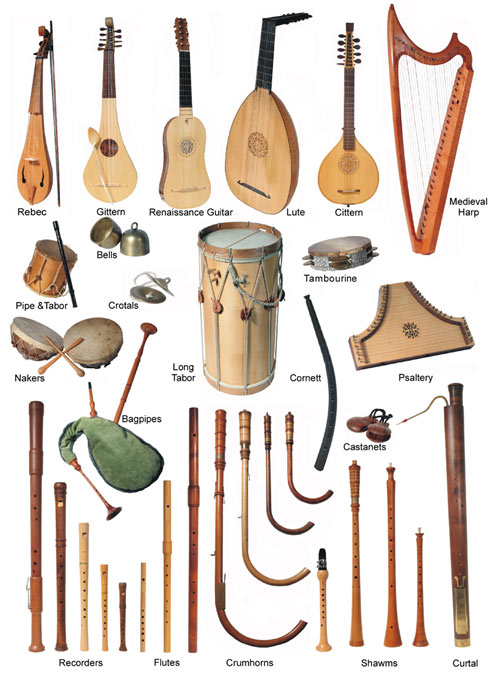
Figure 1. Various Renaissance instruments.
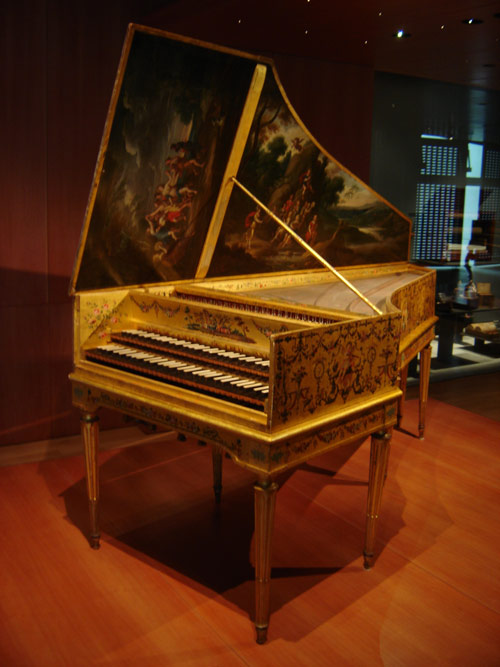
Figure 2. Baroque harpsichord.
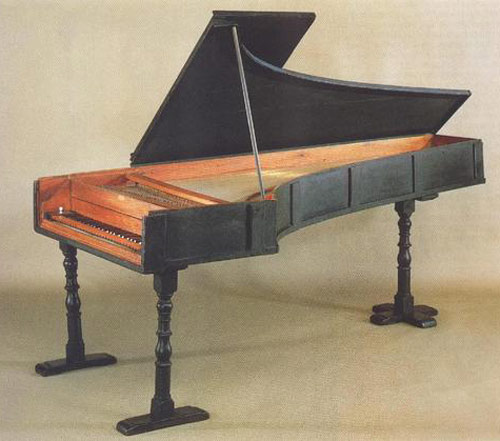
Figure 3. One of the first pianos made, in 1722 in Florence, by Bartolomeo Cristofori. (Museo degli Strumenti Musicali, Rome).
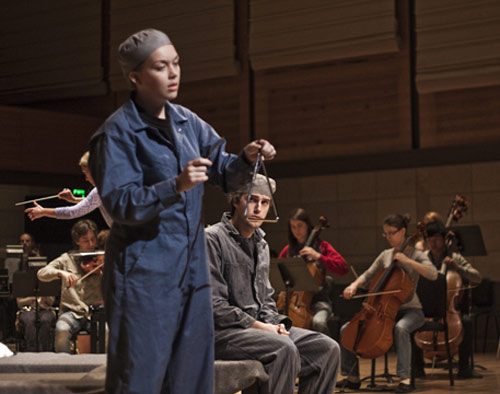
Figure 4. The triangle emulated the Turkish jingle.
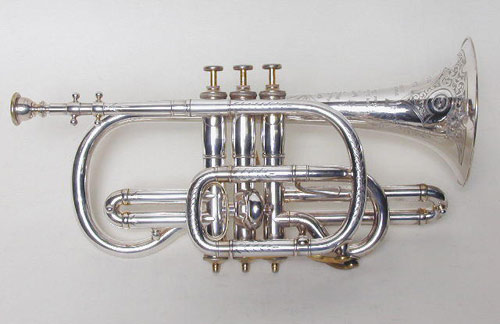
Figure 5. The cornet was a valved variation on the German posthorn.
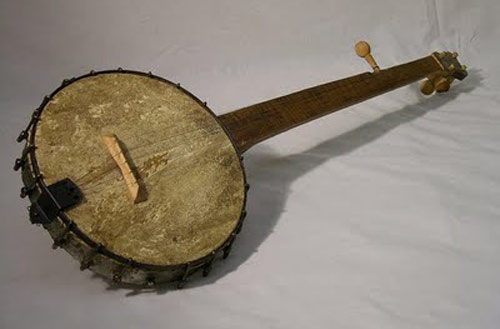
Figure 6. The banjo was a popular accompaniment to spirituals.
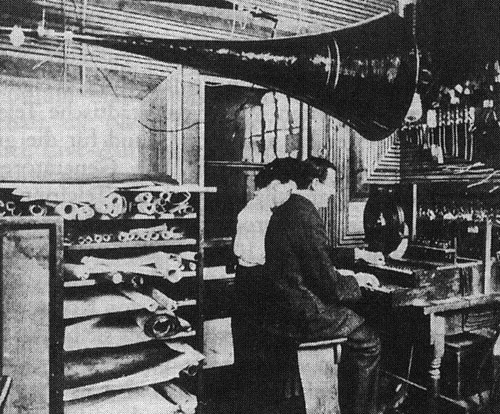
Figure 7. Telharmonium.
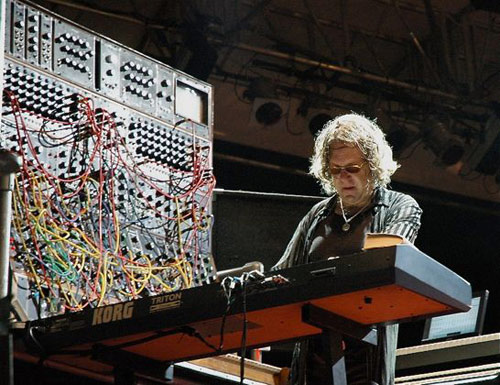
Figure 8. Moog synthesizer.
In Western Europe, instrument-making only started to reach a high level of sophistication after about 1500, when more advanced manufacturing techniques were developed and when the impact of the Renaissance movement had raised music to a new level of importance (Figure 1). Before that time, prototypes of most instruments had been developed, but these lacked the refinement necessary for their long-term survival. By the beginning of the 16th century, instruments had been loosely categorized into two types. 'Bas', or 'soft', instruments were used indoors for background music and dancing, and were generally quiet instruments; they included bowed and plucked strings, woodwind, and portative organs. 'Haut', or 'loud', instruments were used outdoors, often for processions and outdoor dancing, and included shawms, trombones, and slide trumpets. Beyond this loose arrangement, ensembles were formed freely, often just using whatever instruments happened to be available.
A much clearer pattern emerges from the Renaissance period (1450–1600) onward. Renaissance style was based on polyphony, meaning 'many voices', and was dominated by choral music. At that time choirs usually contained between three and five separate parts, each of which spanned a different range of notes. All the parts were melodic and equally important, given the same type of melody and often imitating the melodies of the other parts. Thus, the choir was an ideal ensemble for this type of music as it was well-balanced and blended smoothly into a single overall sound.
Because Renaissance instrumental music was written in the same polyphonic style, it was natural to try to imitate the perfectly blended, single tone-color of the choir. Therefore, families of instruments of similar design but different sizes were developed by instrument-makers to enable them to form their own self-contained choirs, which were called consorts. An equal consort was one in which all the instruments were of the same type, and an unequal consort was a mix of instruments of different types, such as wind and stringed instruments. To take a present-day example, a saxophone quartet would have been an equal consort, whereas a rock group would have been an unequal consort.
The upshot of this was that when a new instrument was invented, it was often swiftly followed by different-sized versions of the same design. In the sixteenth century, the viol family was developed like this, consisting of treble, tenor and bass viol, as were the violin family, the recorder family, the lute family and the crumhorn family. Cornetts, shawms, trombones and flutes also came in different sizes.
Besides consort instruments, there were a few others that could be used as self-contained solo instruments. The organ, which had existed since Greek and Roman times, was becoming much more versatile, incorporating many more stops. The virginals, the precursor to the harpsichord, was becoming popular domestically, and clavichords were steadily developing. The lute was a very popular solo instrument and also accompanied solo singing – the English composer John Dowland (1563–1626) was a notable champion of the instrument. As polyphonic music was hard to play on these instruments, music written for them tended to be more chord-based, anticipating the change of style that came with the Baroque period.
1600–1700
One of the catalysts for the change from the Renaissance style to that of the Baroque period (1600–1750) was the growth of opera, which had become particularly popular in Italy in the late-16th century. In opera, solo singers were playing individual characters on stage, so it made much more sense for them to be given solo melodies against a chordal accompaniment, rather than force them to compete with parts of equal importance in a polyphonic texture. Therefore, accompanying instruments such as the harpsichord (Figure 2) and the chamber organ became essential in opera orchestras. As their bass notes were fairly weak, other instruments such as the cittarone, the theorbo and viola da gamba, were used to reinforce the bass notes and together these instruments formed a 'continuo group'. In early opera, passages for solo singer and continuo alternated with fuller, louder music for a larger group of instruments, and it was in this way that choruses and groups of similar instruments, such as trombones, plucked instruments and stringed instruments, would participate.
Solo operatic singing was now becoming very agile and flamboyant, and melodic instruments that could imitate this sort of soloistic writing were therefore favored. The cornett, a kind of wooden trumpet, was capable of this, as was the violin, which was rapidly replacing the viol as the preferred string instrument, because of its greater volume and expressive range. The Italian composer Claudio Monteverdi (1567–1643) wrote virtuoso music for both instruments in his 1607 opera, Orfeo, and Italian composers such as Giovanni Gabrieli (1557–1612) wrote for trumpets in this way within their instrumental music.
In the 17th century, Italian instrument makers such as Nicola Amati and later Stradivari and Guaneri developed the instruments of the violin family to such a level of perfection that they are still in professional use today. These newer instruments were also louder, easier to play, and produced a timbre that matched the emerging styles of music and audience taste better than viols, and the effect of this was that violins, violas, cellos, and double basses became more favored. Over the next 100 years, they slowly replaced other bowed stringed instruments such as the members of the viol family and the lira da bracchio. In the second half of the seventeenth century, violins were firmly established in the standard large-scale ensemble of royal courts, the Baroque orchestra, and the viola and cello were rapidly replacing the tenor and bass viola da gamba.
As the orchestra became increasingly prevalent, a uniform musical style, of a strong bass line and top line, less prominent inner parts and regular chord changes, gripped Western music. The Renaissance consorts, based on equality, were unsuited to this type of music and disappeared, along with most of the instruments they contained. Wind instruments only stood a chance of surviving if they could perform solos and had a refined-enough tone to play along with the instruments of the violin family. Flutes and the higher recorders survived, but shawms, crumhorns, cornetts, viols and most lutes disappeared from professional music.
At the same tome, new wind instruments were being developed, often by rethinking the design of older ones. The oboe was basically a redesigned shawn and its greater expressiveness and better tone and tuning led to it replacing the older instrument in the second half of the 17th century in military bands and church ensembles. It was also used as a soloist in orchestras. Similarly, the bassoon, which had been around in guises such as the curtal, the bombard, and the dulcian, became a regular member of the orchestra, doubling the bass line in the continuo group.
In church music, the organ was approaching its most influential period, as organ-builders in France, Germany and the Low Countries were developing and refining stops and mixtures, increasing the number of tone colors on offer, The growing practice of equipping organs with pedal-boards allowed organ music to be written in more parts and enable more ambitious music to be written. Among domestic instruments, the virginals gave way to the louder harpsichord, and clavichords were increasingly popular. The guitar started to spread outside Spain and was particularly favored in French and English aristocratic circles.
1700–1750
This period marked the heyday of composers such as George Frideric Handel (1685–1759), Johann Sebastian Bach (1685–1750), Antonio Vivaldi (1678–1741) and Georg Philipp Telemann (1681–1767), and was the culmination of the Baroque era. The Baroque orchestra's core grouping of strings and harpsichord was now very firmly established, and oboes and bassoons were the favored wind instruments. Nevertheless, variants of these core instruments still appeared from time to time, such as the ciola d'amore, the baryton, the oboe di caccia, and the oboe d'amore, and were used by composers to provide occasional contrasts of tone.
Natural trumpets and kettledrums found their way into large-scale pieces, although because they could only play a handful of notes, they tended only to reinforce the rhythm, though high solo trumpet parts were occasionally written (such as Bach's second Brandenburg Concerto). Natural horns were sometimes included too, as they had become more reliable and could now play in several keys thanks to the use of crooks. Both Bach and Handel used them as solo instruments and in the 1740s German composers such as Johann Stamitz (1717–1757) wrote extremely high parts for the instrument, in registers where there were more available notes. Transverse flutes were becoming more common as solo instruments and were replacing recorders in orchestras.
Oboes of several types and bassoons were by now dominating military bands, with horns ousting tenor oboes in the 1720s. In domestic music, the clavichord and harpsichord remained popular, but the virginals was on its way out. A new instrument, the pianoforte, had been developed in 1709, but as yet had not generated much interest (Figure 3). The organ remained the king of church music and with the compositions of Bach reached the height of its influence.
1750–1800
The Baroque style gave way to the classical style (1750–1830), which had developed from the Galant and Rococo styles that had spread across Europe from the 1740s. It played on features that were not part of the Baroque style, such as subtle contrasts of volume, musical 'conversations', and the use of rests within the music. Chord changes were more irregular than in Baroque music, where they tended to happen every beat or half-beat, and textures could suddenly change from four parts to one or two parts every few bars – a great change from the uniformly thick harmonies of Baroque music.
The net result of this was that the continuo group, which had formerly provided filler harmonies more or less throughout the music, now undermined the contrasts that had been carefully written into the music. So continuo instruments like the harpsichord, chamber organ, theorbo, and bass viola de gamba soon disappeared from orchestras, although harpsichords struggled on into the early-nineteenth century.
The harpsichord's decline, together with that of the clavichord, was further accelerated by the dramatic rise of the piano from the 1770s. It was now a stronger instrument, with iron reinforcement, and had become much louder and more reliable. Its great advantage over the harpsichord was its sensitivity, since it could produce notes of any volume through striking the keys with a differing amount of force. It trumped the clavichord on sheer volume of sound, and could work equally well as a soloist and accompanist. Mozart particularly favored the instrument, writing 24 piano concertos and a wealth of chamber music and solo works. The effect the piano had on keyboard music was dramatic. Markings such as dynamics and pedal markings started to appear in printed music, more sustained music was now possible, and subtle, complicated textures relying on a sensitive touch could be written, allowing keyboard virtuosos to show off their talents.
The orchestra was becoming much more uniform. The string section of violins, violas, cellos, and double basses was now standard; oboes, bassoons, horns and trumpets were the favored wind instruments and timpani the solitary percussion. Flutes were becoming permanent fixtures and towards the end of the century, clarinets were staking a claim as the fourth woodwind instrument. The basset horn was occasionally used, such as in Mozart's La Clemenza di Tito, and trombones frequently appeared in both church music, where they helped create a solemn feel, and in operatic music, where they typically represented Hell or the supernatural.
In military music, horns, trumpets and later clarinets and flutes were used in military bands, and newer wind instruments, such as serpents and basset horns, were also tried out. An influx of Turkish instruments from the Turkish Janissary bands – such as cymbals, bass drums, triangles, and Turkish crescents – became increasingly common in European bands (Figure 4). In domestic music, pianos started to replace harpsichords and clavichords, and the mandolin was very popular in Italy. Novelty instruments from this time included the glass armonica, barrel organ, and music box.
1800–1850
This era saw the culmination of Classicism, with its orderly, balanced structures, and the rise of the Romantic period, lasting from 1830–1900. Taking its lead from literature, Romanticism was concerned with the expression of feelings and emotions. Romantic music was often based on stories rather than formal designs, and there was a great interest in supernatural subjects such as witchcraft and dreams. Composers therefore expanded their musical landscapes through exploring more instrumental colors, and wrote for larger ensembles to give their music more impact.
This dramatic musical transformation was helped by the invention, in 1815, of the valve on brass instruments and the continuing refinement of fingering systems on woodwind instruments.
Borrowed from devices controlling the air flow in blast furnaces, the valve was used on brass instruments to divert the air flow into extra lengths of tubing, thereby lowering the pitch and enabling brass instruments' 'missing notes' to be filled in. An alternative way of filling in these notes had been tried earlier using keys, resulting in the keyed bugle, the serpent, and the ophicleide, which were found in the wind bands and occasionally in the orchestras of the 1820s and 1830s. Valved trumpets and horns began to appear in the 1820s and entered mass production in the 1840s, by which time they were in common use in the orchestra. Trombones underwent a revival, losing their associations with the supernatural and entering the orchestra from Beethoven's time onwards.
New brass instruments were also invented, many of which have stayed in brass bands and wind bands ever since. The cornet (Figure 5), the euphonium, and saxhorn families, the flugelhorn, and tuba all emerged in the 1830s and 1840s, and mass production enabled brass and wind instruments to be produced at a cost that ordinary people could afford. This resulted in a huge growth in amateur music-making. In the 1840s, an entirely new family of woodwind instrument, the saxophone, was invented by the Belgian instrument maker Adolphe Sax (1814–-1894), who had also invented the saxhorn. It soon made its way into wind bands and was occasionally used in the orchestra, first of all by Hector Berlioz (1803–1869) and Giacomo Meyerbeer (1791–1864).
Woodwind instruments were further developed and refined. The clarinet was improved and championed by composers such as Carl Maria von Weber (1786–1826), who in his Clarinet Concerto and orchestral music showed how effective it could be as a soloist. Theobald Boehm (1793–1881) brought out a simplified fingering system on the flute in 1832, and this led to similar systems on the oboe, clarinet and eventually bassoon, that made the instruments much easier to play and led composers to write more demanding parts as a result. Instrumental families were formed around the main woodwind instruments, in the same way as they had done in the Renaissance. As a result, the piccolo, cor anglais, several types of clarinet, and the double bassoon soon became common in wind bands and orchestras. Berlioz was one of the first composers to use these instruments orchestrally, including a piccolo, a cor anglais, a clarinet in E-, a contrabassoon as well as a keyed bugle, an ophicleide, and tubular bells in this Symphonie fantastique of 1827.
The harp, which had been used as a folk instrument for hundreds of years, was gaining a higher profile, recent improvements in the pedal mechanism by Sebastien Erand (1752–1831) now enabling it to play a full range of notes. It was in common use in the orchestra by the end of the 1840s. The percussion instruments of the Turkish janissary bands, side drums, bass drums, tambouriness, cymbal, and triangles also became permanent additions to the orchestra.
The piano, meanwhile, had seen a spectacular growth in popularity. Ludwig van Beethoven's (1770–1827) music for the instrument progressively demanded more and more volume and stronger, iron-framed grand pianos were developed accordingly. These improved designs subsequently aided the rise of piano virtuosos such as Frederic Chopin (1810–1849) and Franz Liszt (1811–1886), who gained celebrity status, dazzling audiences with their dexterity, power, sensitivity, and stamina, and writing increasingly challenging music.
The instrument became a required accessory in middle-class homes, and upright models were developed to save space. Through transcriptions and arrangements of works such as symphonies, it provided a way for ordinary people to get to know the music of contemporary composers, and sheet-music sales rocketed as a result.
A smaller alternative to the organ, the harmonium, was developed in the early-19th century, being used in small churches and for domestic music-making. The harmonica, or mouth organ, and the accordion also date from this time, and were initially popular in folk music and among amateurs.
1850–1900
The Romantic period continued, and music became longer and more large-scale, as orchestras expanded to huge proportions. The growth of political nationalism across Europe encouraged countries to develop their own national styles of music, and folk elements found their way into art music. The Impressionist movement, inspired by French painters such as Claude Monet, encouraged composers like Claude Debussy (1862–-1918) to take the continuing exploration of instrumental color to a new level.
Partly to fulfil these demands, the development of new wind and brass instruments continued, but most of these later inventions did not take off. The sarrusophone family – mellophone, helicon, and heckelphone – were sometimes used in orchestras and wind bands but never became standard. Richard Wagner's (1813–1883) creation, the Wagner tuba, had more success thanks to its use in his operas, and it was also written for orchestrally by Richard Strauss (1864–1949) and Anton Bruckner (1824–1896). The clarinet family was still expanding, mainly because of its dominant role in wind bands, and it soon contained models in C, Bb, A, Eb, D, Ab, and F as well as the bass clarinet, and towards the end of the 19th century, the contrabass clarinet. The saxophone family contained five members – bass, baritone, tenor, alto, and soprano – and it too became central to the wind band. Two larger flutes, the alto flute and the bass flute, were developed, but were not really exploited until the twentieth century.
Other instruments were becoming obsolete. The basset horn, the natural trumpet, natural horn, keyed bugle, serpent, and ophicleide were replaced by their modern equivalents and the harpsichord became virtually extinct. Although music that had been originally written for those instruments was still being played, it was assumed that composers would have preferred the modern instruments had they had the choice.
While fewer instruments were invented than in the previous 50 years, existing instruments continued to be refined, both to make them more versatile and to give them a broader tone. Improvements to the fingering systems of oboes and clarinets were made and Wilhelm Heckel (1856–1909) modernized the bassoon's fingering system in the 1880s. The bored of wind instruments were widened, and instruments such as the trumpet, horn and trombone gained a fuller sound as a result. Richard Strauss was the first composer to exploit to the full the virtuoso qualities of the French horn, with two horn concertos and spectacular orchestral horn parts.
A wider range of percussion instruments was also being used. The celesta became an occasional orchestral member after Pyotr Ilyich Tchaikovsky's (1840–93) use of it in The Nutcracker and Camille Saint-Saëns (1835–1921) introduced the xylophone in the 1870s. The lyra-glockenspiel was becoming common in wind bands and a visit by a gamelan ensemble to the Paris Exhibition of 1889 generated a wave of interest among western composers for metallic percussion instruments such as antique cymbals, tam-tams, and gongs.
In Spain, a revival of the guitar was underway, started by Francisco Tarrega. In the American Deep South, the banjo (Figure 6) became popular among African-American workers, anticipating its adoption into early jazz groups. Nationalism was partly responsible for a surge of interest in folk instruments, such as the balalaika in Russia, the cimbalom in Hungary, and the bagpipes in Scotland.
1900–1950
By the time of the First World War Romanticism's hegemony was breaking down, as evidenced by a moving away from traditional harmony and rhythm in expressionistic music of Igor Stravinsky (1882–1971), Arnold Schoenberg (1874–1951), and Bela Bartók (1881–1945). The inter-war period saw the return of smaller-scale music that harked back to Classicism, while in America, jazz was fast becoming a popular phenomenon. Technological developments led to the first electronic instruments, the start of the recording industry and broadcast media – all of which had a profound effect on Western music. This was the dawn of mass communication, which enabled musical styles to spread across the globe, and swing band music was the first type of music to achieve mass popularity in this way.
The large-scale development of new wind and brass instruments that had taken over the previous century slowed down markedly, although one or two new instruments still came out. These included the heckelphone and the sousaphone, creations of Heckel and the American wind-band leader, John Philip Sousa (1854–1932), respectively. The orchestra, the brass band, and the wind band reached their maximum size at the beginning of the century, and changing tastes and post-war austerity ensured that they never reached this size again. Their personnel had really been fixed in the late-nineteenth century.
In terms of mechanical instruments, the player piano, which could play music through holes punched in rolls of paper, appeared in the first decade, and was used as a type of jukebox, playing performances of popular piano pieces, although it was also used by Stravinsky as a compositional aid, anticipating a similar use of the sequencer by 80 years.
Early electronic instruments included the telharmonium (Figure 7), the theremin, the ondes Martenot, and the trautonium, but of these only the ondes Martenot enjoyed much notoriety, thanks mainly to composers such as Oliver Messiaen (1908–1992) who incorporated it into some of his orchestral pieces. Electric organs, notably the Hammond organ, were developed, too, electronic mechanisms were now common on pipe organs. Cinema organs emerged at the beginning of the century and were usually used to play light music at leisure venues. The electric guitar was developed in the 1940s and was soon being taken up by jazz musicians such as Charlie Christian.
Percussion instruments continued to attract the interest of composers, and instruments as diverse as bull-roarers, sirens, whistles, guiros, thundersheets, wind machines, woodblocks, whips, tom-toms, and rattles were used by composers such as Edgar Varese (1883–1965), Stravinsky and Messiaen. In jazz, a single percussionist played several instruments in a drum kit, and to aid this, foot-operated hi-hat cymbals and bass drums became standard.
Through the immense popularity of jazz groups and swing bands, instruments such as the trumpet, trombone, saxophone, clarinet, banjo, guitar, piano, double bass, and vibraphone gained a new type of appeal and helped create virtuous such as Benny Goodman (clarinet), Louis Armstrong (trumpet), Charlie Parker (saxophone), and Lionel Hampton (vibraphone).
With recorded music now readily available through the gramophone and the radio, domestic and amateur music-making started to go into decline, although the effects were not felt until later in the century. Accordions, concertinas, and mouth organs were popular among street musicians, and occasionally found their way into operas to replicate this street music.
Attempts a resurrecting certain instruments began, with the Dolmetsch family reconstructing instruments such as harpsichords, clavichords, viols, lutes, and recorders in their family workshop.
Folk-music collectors, notably the Hungarian composers Bartok and Zoltan Kodaly (1882–1967), traveled to rural areas of Europe and North Africa recording traditional folk music and cataloguing the instruments they came across. This stimulated a new interest in authentic folk music, and some of the instruments and instrumental techniques they discovered were incorporated into their own compositions (for example, the cimbalom). This anticipated the huge interest in world music that has sprung up in the last 20 or 30 years.
1950–present
In the last 50 years, music has branched off into hundreds of different directions. Music technology has played a large part in this, with the huge number of recordings available exposing people to many more types of music. The public's ongoing consumption of music, via the broadcast media and through the popularity of record and CD collecting, has enabled obscure music to be recorded commercially. Helped by a growth in academic study into old instruments and folk music, this has resulted in the resurrection of obsolete and rare instruments and given a new lease of life to those on their way out.
However, the flip side to this is that the ubiquity of commercial music has contributed to a decline in more traditional music. In classical music, highly experimental compositional methods have been explored. exploiting every sort of coloristic effect and instrumental combination. Movements such as integral serialism (music derived from a single series of numbers), aleatoricism (music based on chance), minimalism (the repetition of very short musical ideas), and postmodernism (music that combines modern ideas with more traditional elements) have demanded a new sort of virtuosity from performers and a consistently high quality of instrument.
Baroque instruments such as the harpsichord, recorder, and theorbo, were reintroduced into performances of Baroque music in the 1950s, and were followed by Renaissance and medieval instruments. More recently, authentic classical and 19th-century instruments, such as natural horns and older designs of oboes, clarinets, and bassoons have been used in performances of Classical and Romantic music.
Amplification of instruments has been a key development, enabling any sound to be made as loud as necessary. This meant there was no longer a need to develop powerful acoustic instruments, in the way that the pipe organ, grand piano, and tuba had evolved, or to form vast groups of instrumentalists, such as large symphony orchestras, since a whole stadium could now be filled by, say, a singer, an electric guitar and drums.
Amplification played a crucial role in popularizing rock and pop music. Mass audiences were wowed by the sheer energy of high-decibel performances, which made acoustic performances sound sterile and old-fashioned in comparison. Rock-music instruments such as keyboard, electric guitars, electric bass guitars, and drum kits became immensely popular and began to replace equivalent instruments in other types of music, especially jazz and folk ensembles. Virtuoso electric-guitar players became a new phenomenon, the astounding development of guitar technique by Jimi Hendrix inspiring a succession of imitators. The Hawaiian guitar was a natural entrant into American country music, its ability to slide between notes complementing the similar techniques of folk fiddlers.
The recording studio, too, changed the traditional way in which instrumentalists interacted. Once multitracking had been developed in the 1960s, musicians could be recorded over each other one at a time, producing a finished product in which the same performer might appear in several guises, or in which musicians who might never have met performed together. In this setting, performers no longer needed to be balanced acoustically as this could be done by a recording engineer. This meant to was possible to bring together instrumental colors that would be impossible to balance normally, and led to a greater exploration of exotic and unusual instruments.
In the 1950s, early experiments with cutting up and manipulating sounds recorded on magnetic tape resulted in a type of music called musique concrete. It was pioneered by composers such as Stockhausen and Varese, and anticipated the use of samplers, in dance music by more than 30 years. Crucially, it showed it was possible to mount a musical performance without live performers, paving the way for discos and nightclubs from the the 1960s onwards.
New electronic instruments were introduced with increasing frequency, and although they were initially used by experimental classical composers, they became increasingly geared towards rock musicians. Robert Moog (1934–-2005) was an important pioneer, producing the Moog (Figure 8), Minimoog and polymoog synthesizers, whose sounds were popularized by Wendy Carlos on her Switched on Bach album of 1968. A number of electric organs, electronic pianos, and electric violins were marketed from the 1960s onwards by manufacturers such as Fender and Yahama while specialist instruments such as the clavinet and keyboard bass also had periods of popularity.
The synthesizer grew dominant in pop music in the 1980s as it became commercially available on a large scale. Programmable drum machines such as the Roland TR808, synthesizers like the Yamaha DX7, and the invention of the MIDI – which allowed different electronic instruments to control each other – meant that it was now possible for an individual to create fairly sophisticated musical textures without having to call on other performers. This certainly had an effect on commercial music such as television and film music, where there was a growing pressure to cut costs, and it consequently became more difficult for session musicians to gain work in this area. Samplers, which could manipulate real sounds, started to become commercially available in the late 1980s and, together with more powerful home computers and more advanced music software, were responsible for a vast wave of computer-based dance music in the 1990s. Traditional rock-music instruments have since made a comeback, but evermore convincing samples of real instruments are encouraging composers to dispense with actual performers.
While pop music embraced new technology, many musical styles have largely ignored it and continued to use the instruments they always did. This is because many groups still often play music from before 1945. Wind bands, brass bands, dance bands, and most established classical-music combinations, such as orchestras and string quartets, mostly play repertoire from over 50 years ago and when they do commission new music, they usually restrict it to their standard line-ups. Thus the orchestra, despite countless new pieces involving extra percussionists, world music instruments, live electronics and collaborations with jazz and rock musicians, has remained pretty much the same, although a few percussion instruments, such as the marimba, tuned gongs, and rota-toms, are not as unusual as they once were. New non-electronic instrumental inventions have had a certain amount of cult success. Composers such as Harry Partch (1901–1974), George Crumb (1929–2022) and John Cage (1912–1992) invented countless instruments of their own, and others such as Conlon Nancarrow (1912–1997) explored the potential of a single instrument, in his case the player piano. Other new instruments were produced to cope with advanced techniques of contemporary composers, especially the use of very small intervals called microtones. Microtonal trumpets and alto flutes have been produced in recent years, and modified instruments such as the double-belled trumpet have occasionally attracted virtuoso performers and composers.
Today, through the influence of performers, composers, musical academics, composers, musical academics, broadcasters, the recording industry and the internet, more instruments from all eras and all traditions are in use than ever before. The future of the development of musical instruments is dependent upon how much further music technology develops, the extent to which it is embraced and the extent to which music continues to be influenced by globalization and mass marketing. The history of musical instruments so far has shown that instruments will continue to evolve and to shape music in ways we can never anticipate.


